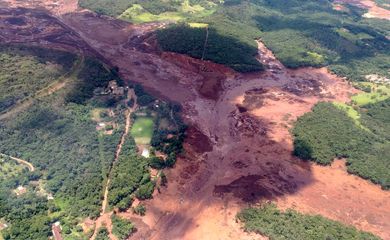Vallourec to pay BRL $73 mi over environment damages in Minas Gerais

French mining company Vallourec has agreed to pay BRL 73 million to compensate for environmental impacts and collective moral damages caused earlier this year in Minas Gerais state. On February 8, a dam at the Pau Branco mine, in the municipality of Nova Lima, overflowed. The structure did not break down, nor were there any fatalities, but federal highway BR-040 was affected by the mud and was blocked for almost two days.

The mining company must also adopt a number of environmental remedial measures and guarantee safety in its facilities. Furthermore, a fine of BRL 80 million, imposed by the state’s environment authorities, must be paid within 10 days.
According to a note from federal prosecutors, the overflow caused environmental, social, and economic impacts in the region, and studies are still ongoing.
“It is already known that the sub-basin of the Cachoeirinha stream and the Miguelão lagoon were directly affected, with changes in water quality, suppression of vegetation, and aggradation of the banks and the beds of natural water courses. There was also damage to the wildlife habitat,” the text reads. Also according to the prosecutors, the mud has reached three conservation units.
To store iron mining waste in Pau Branco, the company adopts the dry stacking method, where filtered water is re-used in production, while ore tailings are disposed of in piles, thus foregoing the use of dams.
This alternative, though more costly, has become attractive amidst changes in Brazilian environmental legislation introduced after the tragedies in Mariana and Brumadinho, cities also located in Minas Gerais, where dam breaches caused deaths and severe damage to the environment. Many of the large mining companies operating in the country—such as Vale and Usiminas—have moved in this direction at some of their facilities.
Despite the optimism publicly expressed by mining companies availing themselves of this method, the episode in the Pau Branco mine raised a red flag. The overflow was reported at the dam that catches the rainwater that run through the tailings stack. The water level rose because part of the piled up material slipped into the reservoir.






